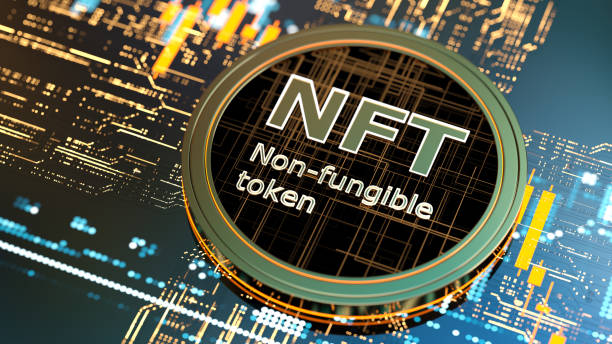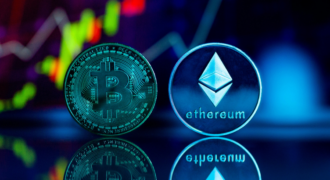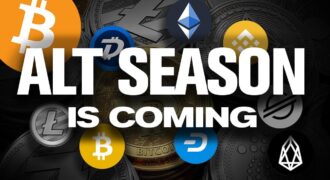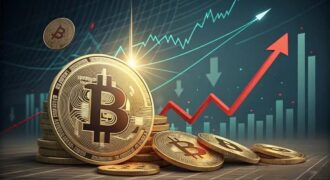The world of Non-Fungible Tokens (NFTs) and the Metaverse has evolved at an astonishing pace. What started as a niche for digital art and collectibles has transformed into a global phenomenon, shaping the future of digital ownership, entertainment, and virtual experiences. With new projects, marketplaces, and opportunities emerging every day, staying up-to-date on the latest trends is essential for anyone interested in these exciting realms.
NFTs: More Than Just Digital Art
At their core, NFTs are unique digital assets verified on a blockchain, giving them a degree of scarcity and ownership previously unseen in the digital world. While NFTs initially gained traction as a way to represent digital art, their utility has expanded into several key areas:
- Digital Collectibles & Gaming: NFTs have become the backbone of the growing play-to-earn (P2E) and gaming economy. Players are no longer simply spending money on in-game items; now, they can own, trade, and profit from assets within games. From rare in-game skins to unique weapons and characters, NFTs are transforming virtual worlds into financial ecosystems.
- Music, Video, and Media: The NFT revolution isn’t limited to art. Musicians, filmmakers, and content creators are exploring NFTs to sell unique pieces of their work directly to fans. With NFTs, artists can maintain control over their creations, earning royalties each time their work is resold in the secondary market.
- Real-World Assets & Tokenization: As blockchain adoption grows, real-world assets like real estate, luxury goods, and even intellectual property are being tokenized as NFTs. This trend makes it easier to fractionalize ownership, turning high-value assets into more accessible investments for the masses.
Metaverse: Virtual Worlds Beyond Imagination
The Metaverse represents the next frontier in digital interaction, offering immersive virtual worlds where people can socialize, play, work, and create. These interconnected virtual universes are powered by blockchain, VR (virtual reality), and AR (augmented reality), providing endless opportunities for exploration and engagement.
- Virtual Real Estate Boom: Virtual real estate is one of the most exciting developments in the Metaverse. Platforms like Decentraland, The Sandbox, and Somnium Space allow users to buy, sell, and develop parcels of digital land. These virtual properties can be used for anything from hosting virtual events to building digital storefronts or creating art galleries. As demand grows, virtual real estate is increasingly seen as a valuable commodity, with some land parcels selling for millions of dollars.
- Socializing and Networking in the Metaverse: In the Metaverse, physical distance is no longer a barrier. Social VR platforms like VRChat and AltspaceVR have become hubs for virtual meetups, concerts, and conferences, where users can interact as avatars in fully immersive environments. For professionals, Metaverse spaces are also becoming new venues for networking and collaboration, offering a more engaging alternative to traditional video calls.
- Entertainment and Immersive Experiences: The Metaverse is evolving into a hub for entertainment. Artists like Snoop Dogg and Travis Scott have already hosted concerts within virtual environments, drawing millions of viewers. Moreover, platforms like Roblox and Fortnite are pushing the boundaries of what entertainment in the digital world can look like, with interactive experiences that blend gaming, live events, and social interaction.
- Economic Systems & Play-to-Earn (P2E) Models: One of the most groundbreaking trends in the Metaverse is the rise of Play-to-Earn (P2E) games, where players can earn real-world money by participating in virtual activities. These games often incorporate NFTs, allowing players to collect, trade, and sell virtual assets that hold real value. In this new economy, players are not just consuming entertainment—they’re actively participating in and benefiting from the economic ecosystem of the Metaverse.
Where NFTs and the Metaverse Intersect
The intersection of NFTs and the Metaverse is where things get really interesting. NFTs are not just standalone digital assets; they are becoming the building blocks of the Metaverse itself. Here’s how the two technologies are converging:
- Virtual Identity and Avatars: Your avatar in the Metaverse will likely be an NFT itself—an identity token representing your digital self. Whether it’s your in-game character, virtual clothes, or accessories, NFTs are giving users true ownership over their Metaverse identities. These items aren’t just temporary; they can be transferred across virtual worlds, giving players control over their personal digital assets.
- Interoperability and Cross-Platform Experiences: One of the key benefits of NFTs in the Metaverse is their potential for interoperability. Unlike traditional digital goods, NFTs can be used across multiple platforms, allowing users to transfer assets between different virtual worlds. For example, a rare piece of art or a digital collectible from one game could be displayed in another world or traded on a different marketplace, creating a fluid and interconnected Metaverse economy.
- NFT Marketplaces within Virtual Worlds: As the Metaverse grows, we are seeing the rise of virtual NFT marketplaces within the Metaverse itself. Imagine walking through a digital gallery, viewing NFTs on display, and purchasing them directly from the creators—all without ever leaving the virtual environment. This integration between NFTs and the Metaverse is shaping the future of digital commerce and how we buy, sell, and experience art and assets.
The Road Ahead: What’s Next for NFTs and the Metaverse?
While NFTs and the Metaverse are already shaping the future, there’s still much more to come. Here are a few exciting developments to watch:
- AI and NFTs: Artificial intelligence (AI) is beginning to play a role in creating NFTs, from AI-generated art to AI-driven marketplaces. The fusion of AI and blockchain technology will bring new possibilities for digital assets and creativity.
- Sustainability: As NFTs and the Metaverse continue to grow, the industry is facing increasing pressure to address environmental concerns. Solutions like Ethereum 2.0 and Layer 2 scaling are being developed to make these technologies more energy-efficient and sustainable.
- Integration with Traditional Industries: Major corporations and institutions are beginning to recognize the potential of NFTs and the Metaverse. Expect to see more partnerships between the virtual and physical worlds, including branded NFTs, virtual fashion, and digital twins of physical assets.
Conclusion
The NFTs and Metaverse are more than just buzzwords—they are creating new economies, opportunities, and forms of digital expression. Whether you’re an artist, gamer, investor, or simply an enthusiast, staying up-to-date with these trends is crucial for understanding the future of technology, culture, and digital ownership.
As these innovations continue to unfold, one thing is certain: the intersection of NFTs and the Metaverse will be a defining force in shaping how we interact, create, and transact in the digital world.






